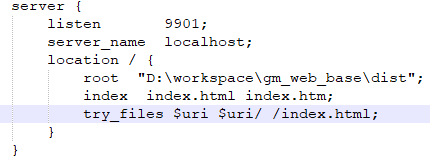可以将文章内容翻译成中文,广告屏蔽插件可能会导致该功能失效(如失效,请关闭广告屏蔽插件后再试):
问题:
My son is enthusiastically programming simple games in Scratch. However Scratch is a very simple programming environment (no subroutines even), and I can see that soon he is going to need to move on to something else.
Does anyone know of a good learning language that makes graphics easy but provides "real" programming features like data structures, functions, arrays and lists?
Bonus points if it runs under Linux (Ubuntu). An answer of the form "language Foo with library Bar" is also an option.
回答1:
How about lua?
There is nice graphic "engine" called LOVE which is fully programmable in lua. It has nice documentation and it's not very hard.
There are also several other similar engines using lua:
- Novashell
- Verge
- Luxinia
- Agen
There was another 2d engine, but I can't find it at the moment, it was similar to LOVE, but with a little different approach to things.
I would recommend LOVE for starters as it's very easy, has nice tutorials and most importantly you can do nice stuff right away.
Also lua is commonly used as game scripting language. For example all addons for World of Warcraft are written in lua, in fact all of the interface is written in lua. It means that it's very easy to find answers to game related questions in lua. Also if you happen to own a game which uses lua as scripting language, you could easily add your own stuff to it.
I wrote this from game perspective, but there are quite a lot projects which use lua as scripting language.
You could also try python, but it doesn't have so good out of the box, ready to use and easy to learn/understand tools.
Also here's a link to lua manual.
回答2:
If Scratch is starting to get a bit limiting, but they're not ready for the hardships of text-editor coding, take a look at Scratch-derivative "BYOB" (Build Your Own Blocks). Seriously, it turns Scratch into a grown-up programming environment with functions (and hence recursion), data-structures, multithreading and everything!
There's also Panther but I was less impressed by it (creating new blocks in Panther seems to require coding their function up directly in Squeak, while in BYOB you can just build them in the usual drag-n-drop Scratch style).
回答3:
Take a look at Processing.
It's tour de force is graphics, animation, and visual manipulation. It runs under Linux, too.
Processing is an open source
programming language and environment
for people who want to program images,
animation, and interactions. It is
used by students, artists, designers,
researchers, and hobbyists for
learning, prototyping, and production.
It is created to teach fundamentals of
computer programming within a visual
context and to serve as a software
sketchbook and professional production
tool.
回答4:
A nice review here suggests Alice and Shoes after Scratch -- I have no personal experience in the matter, but from the review they seem worth checking out.
回答5:
It might be just a little bit larger of a jump, but Python with PyGame will allow your pupil to make many of the same sorts of programs as he or she is already used to with Scratch, but with very tight control over how the whole thing works.
- Pros: It's python, which is a very easy language to read and write, and provides a very rich programming environment, without really any boilerplate required.
- Cons: its SDL, which uses an event-loop that you get to write yourself. This might be a pretty large hurdle for a young programmer.
回答6:
Scratch is written in Squeak (which runs on Linux, Windows and Mac) so I'll say step up to Smalltalk! The only problem is the lack of a very good beginners book on the language, which is strange when you consider its origins. However, the basic concepts are easy to learn (almost no syntax) and the environment encourages experimentation.
回答7:
Here is an interesting microsoft project called Small Basic that is a good, simple, free programming environment for learning, based on BASIC.
No bonus points because of the lack of ubuntu, but a cool learning tool.
回答8:
is QuickBasic still around? That's what I started with when I was like 7-8, and I was able to make full fledged games, etc. without any external libraries.
EDIT: check out this link about FreeBasic:
http://linux.about.com/b/2006/11/10/freebasic-open-source-alternative-to-quickbasic.htm
回答9:
Well, there is venerable old Logo -- not sure about structures but you do get lists, functions with parameters, and graphics are very straightforward. There are plenty of good implementations, too. Logo has even been likened to 'lisp without all the parentheses'.
回答10:
I would suggest using CodingBat. Although CodingBat doesn't provide graphics, it does provide the "programming features" and straightforward practice involving strings, array, and logic.
I think this website helps with developing the basic foundation behind programming.
Link: http://codingbat.com/


